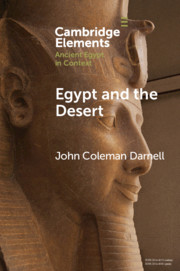146 results
Outcomes and characteristics in term infants with necrotising enterocolitis and CHD
-
- Journal:
- Cardiology in the Young , First View
- Published online by Cambridge University Press:
- 02 January 2024, pp. 1-7
-
- Article
-
- You have access
- Open access
- HTML
- Export citation
23 - Phonetics and Experimental Phonology, c. 1950–2000
- from Part IIIB - 1960–2000: Formalism, Cognitivism, Language Use and Function, Interdisciplinarity
-
-
- Book:
- The Cambridge History of Linguistics
- Published online:
- 20 July 2023
- Print publication:
- 10 August 2023, pp 728-752
-
- Chapter
- Export citation
On Measuring Mexican Presidential Ideology Through Budgets: A Reappraisal of the Wilkie Approach
-
- Journal:
- Latin American Research Review / Volume 10 / Issue 1 / Spring 1975
- Published online by Cambridge University Press:
- 24 October 2022, pp. 77-88
-
- Article
-
- You have access
- Export citation
Intonation of Greek in contact with Turkish: a diachronic study
-
- Journal:
- Language Variation and Change / Volume 34 / Issue 3 / October 2022
- Published online by Cambridge University Press:
- 09 January 2023, pp. 271-303
- Print publication:
- October 2022
-
- Article
-
- You have access
- Open access
- HTML
- Export citation

Egypt and the Desert
-
- Published online:
- 17 May 2021
- Print publication:
- 10 June 2021
-
- Element
- Export citation
Mental health in UK Biobank – development, implementation and results from an online questionnaire completed by 157 366 participants: a reanalysis
-
- Journal:
- BJPsych Open / Volume 6 / Issue 2 / March 2020
- Published online by Cambridge University Press:
- 06 February 2020, e18
-
- Article
-
- You have access
- Open access
- HTML
- Export citation
35 - Prizing Otherness
- from (II) - Framing New Visions
-
-
- Book:
- The Cambridge History of Black and Asian British Writing
- Published online:
- 19 December 2019
- Print publication:
- 16 January 2020, pp 584-597
-
- Chapter
- Export citation
6 - Understanding Adolescent Development in the Context of Child Sexual Exploitation
-
-
- Book:
- Child Sexual Exploitation: Why Theory Matters
- Published by:
- Bristol University Press
- Published online:
- 10 March 2021
- Print publication:
- 02 December 2019, pp 117-132
-
- Chapter
- Export citation
Chapter 2 - The Intertidal Zone of the North-East Atlantic Region
-
-
- Book:
- Interactions in the Marine Benthos
- Published online:
- 07 September 2019
- Print publication:
- 29 August 2019, pp 7-46
-
- Chapter
- Export citation
Chemical, Biological, Radiological, Nuclear, and Explosive (CBRNE) Science and the CBRNE Science Medical Operations Science Support Expert (CMOSSE)
-
- Journal:
- Disaster Medicine and Public Health Preparedness / Volume 13 / Issue 5-6 / December 2019
- Published online by Cambridge University Press:
- 17 June 2019, pp. 995-1010
-
- Article
- Export citation
Mental health in UK Biobank: development, implementation and results from an online questionnaire completed by 157 366 participants — RETRACTED
-
- Journal:
- BJPsych Open / Volume 5 / Issue 4 / July 2019
- Published online by Cambridge University Press:
- 17 June 2019, e56
-
- Article
-
- You have access
- Open access
- HTML
- Export citation
Unexpected Lessons from a Mass Casualty Simulation: Strategies for Management of the Minimally Injured Can Increase Efficiency and Decrease Chaos
-
- Journal:
- Prehospital and Disaster Medicine / Volume 34 / Issue s1 / May 2019
- Published online by Cambridge University Press:
- 06 May 2019, pp. s173-s174
- Print publication:
- May 2019
-
- Article
-
- You have access
- Export citation
8 - Antennas
-
- Book:
- Foundations of Radio for Scientists and Technologists
- Published online:
- 22 August 2018
- Print publication:
- 23 August 2018, pp 150-182
-
- Chapter
- Export citation
6 - Digital Techniques and Software-Defined Radio
-
- Book:
- Foundations of Radio for Scientists and Technologists
- Published online:
- 22 August 2018
- Print publication:
- 23 August 2018, pp 110-128
-
- Chapter
- Export citation
4 - Amplification
-
- Book:
- Foundations of Radio for Scientists and Technologists
- Published online:
- 22 August 2018
- Print publication:
- 23 August 2018, pp 53-82
-
- Chapter
- Export citation
Preface
-
- Book:
- Foundations of Radio for Scientists and Technologists
- Published online:
- 22 August 2018
- Print publication:
- 23 August 2018, pp ix-x
-
- Chapter
- Export citation
10 - Modern Radio Systems
-
- Book:
- Foundations of Radio for Scientists and Technologists
- Published online:
- 22 August 2018
- Print publication:
- 23 August 2018, pp 206-224
-
- Chapter
- Export citation
1 - Electromagnetism
-
- Book:
- Foundations of Radio for Scientists and Technologists
- Published online:
- 22 August 2018
- Print publication:
- 23 August 2018, pp 1-20
-
- Chapter
-
- You have access
- Export citation
7 - Transmission Lines
-
- Book:
- Foundations of Radio for Scientists and Technologists
- Published online:
- 22 August 2018
- Print publication:
- 23 August 2018, pp 129-149
-
- Chapter
- Export citation
3 - Tuned Circuits
-
- Book:
- Foundations of Radio for Scientists and Technologists
- Published online:
- 22 August 2018
- Print publication:
- 23 August 2018, pp 39-52
-
- Chapter
- Export citation



